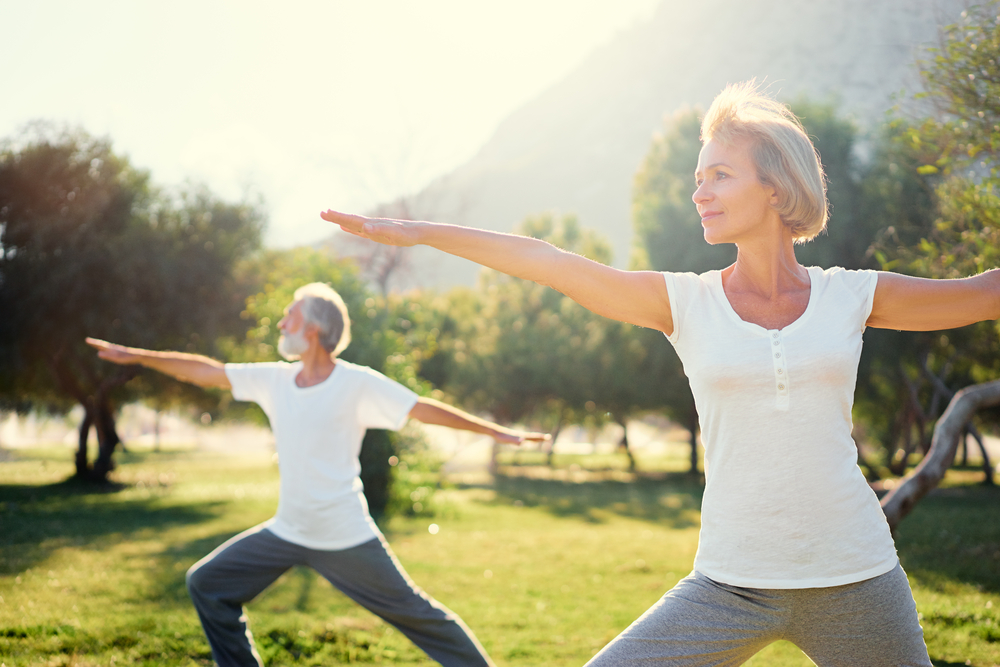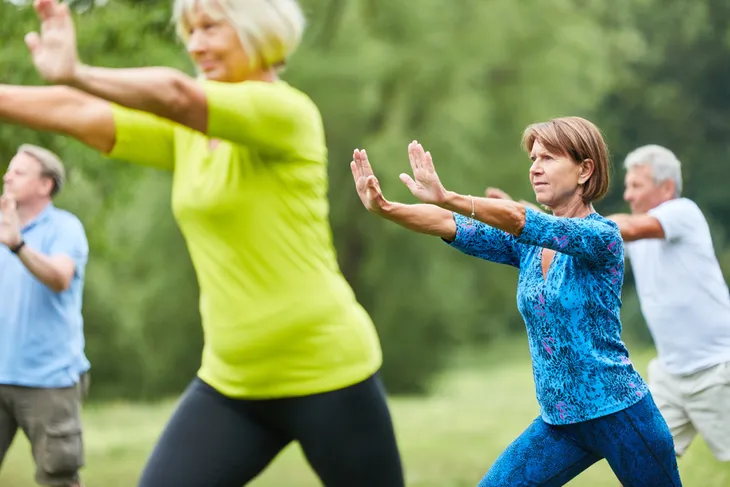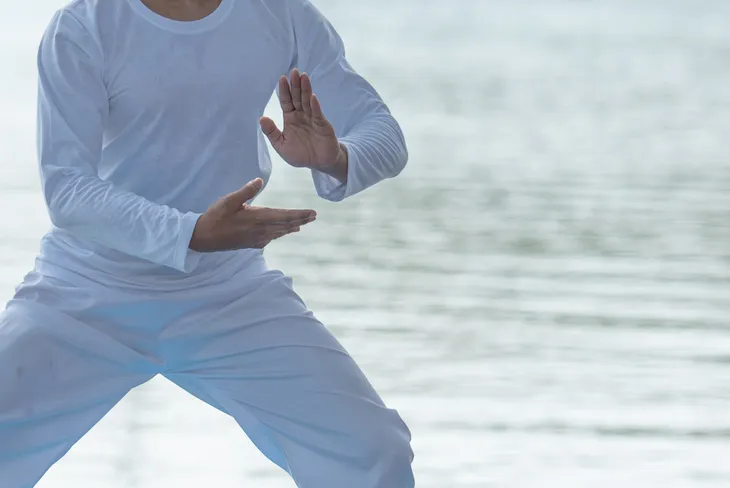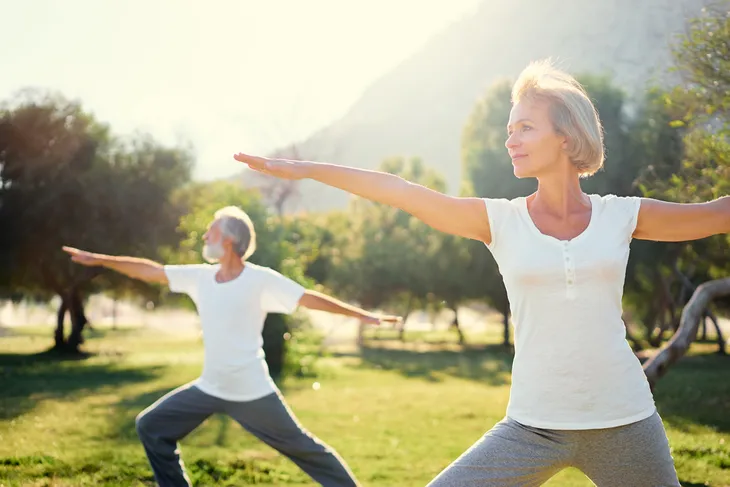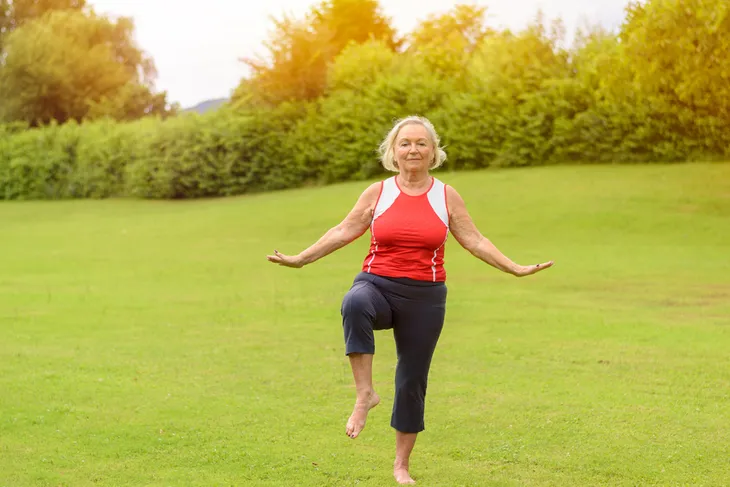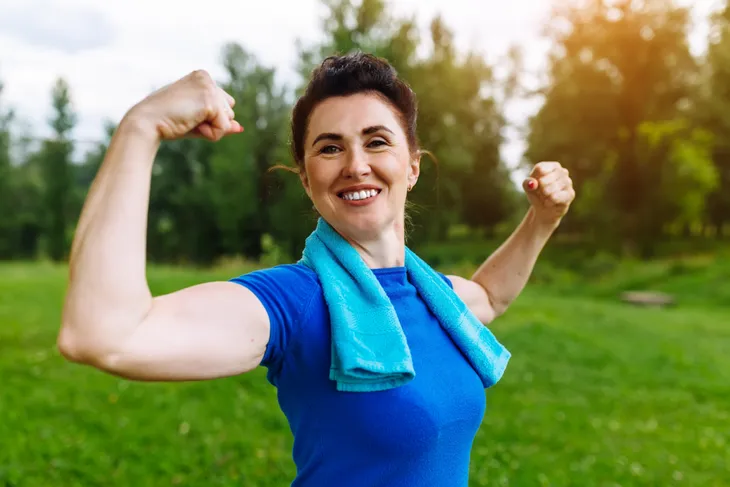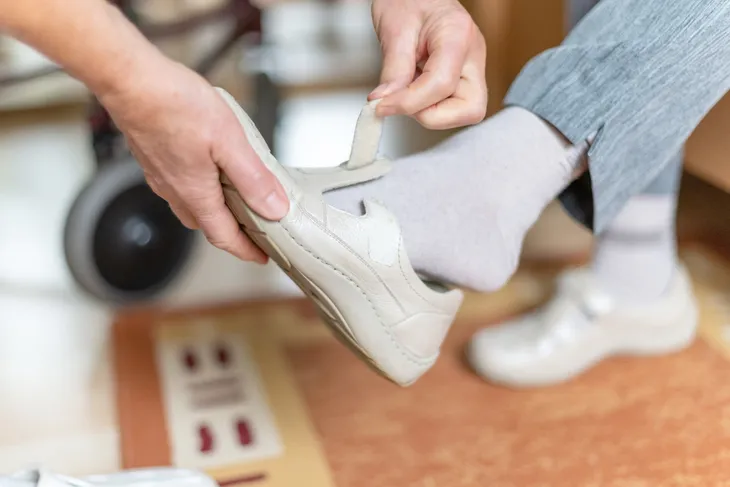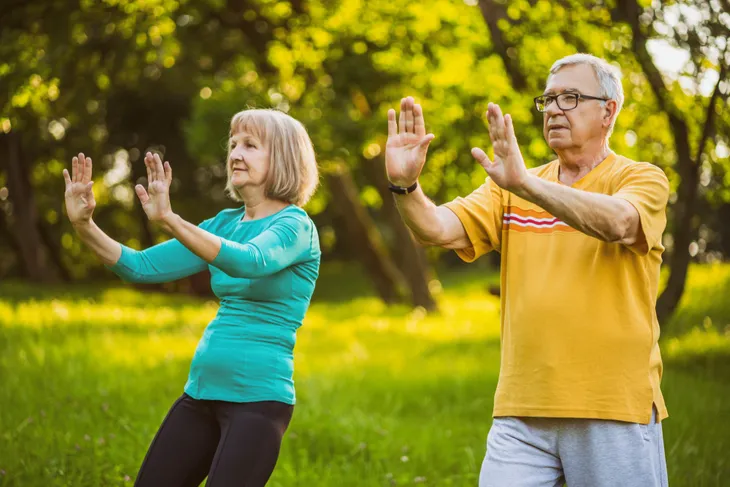Are you new to fitness or are you looking for a low-impact form of exercise? Then tai chi may be a good fit for you. Tai chi, often known as meditation in motion, was originally developed for self-defense but has since evolved into a rhythmic form of exercise. Relieving stress, improving flexibility and balance, and improving strength are just a few of the benefits you can gain from tai chi.
In this article, we explore the benefits of tai chi for seniors as well as the steps to get started. After all, Regular exercise can help your muscles grow stronger, and prevent other health problems that naturally occur with age. What better way to get started than with a low-impact workout like tai chi!
It’s worth noting, while tai chi can be a great form of exercise for older adults, it is always a good idea to speak with your doctor before starting a new workout regimen — especially if you have a medical condition.
Want senior content delivered straight to your inbox? Sign up for our exclusive email list and receive articles and news on diet & nutrition, fitness, and mental health dedicated specifically to our senior audience!
What is Tai Chi
Tai Chi is a graceful form of exercise that has ancient Chinese origins. Mayo Clinic explains, “It involves a series of movements performed in a slow, focused manner and accompanied by deep breathing.”
Tai chi focuses on stretching as well as movements without pause that ensure your body is in constant motion. These gentle movements make it a low-impact workout and a great option for seniors, and those with physical disabilities and/or limitations.
It’s also worth noting, there are five main styles of tai chi, Yang, Wu, Chen, Sun, and Hao. While they all share the same origin and similarities, each style has its own unique characteristics.
The Benefits of Tai Chi for Seniors
There are so many benefits of tai chi for seniors from mental and physical to emotional and spiritual benefits. To begin, tai chi is a great form of exercise for beginners as well as all fitness levels as it’s slow, low-impact, and gentle on your body. Not only can you gain a better posture by doing tai chi but you’ll also be able to increase your flexibility all of which is important as you age.
In addition to physical benefits, you can also gain mental benefits from tai chi. Some of these include reducing stress, improving your mood, and more. Let’s explore this next.
Improves Mood and Relieves Stress
As we discussed earlier, tai chi is liked meditation but with movement added. While the movements help stretch and relax the body, the breathing and mediation portion of the exercise will help improve your mood.
Tai chi is known to help reduce the effects of depression, anxiety, and stress all the while boosting your mood. This will better equip us to deal with stressful situations.
Reduces Your Fear and Risk of Falling
If you’re afraid of falling, know you’re not alone. Thankfully, there are several things you can do to help reduce your risks of falling. This includes maintaining good balance, coordination, and flexibility all of which can be improved through tai chi.
Tai chi incorporates a combination of body rotations, weight shifting, and semi-squat positions which can help improve strength and balance in your legs. This is an important part of preventing falls.
Relives Various Types of Pain
Multiple studies have shown that tai chi is a great exercise to relieve various types of pain. For starters, the movements may be effective for relieving pain from fibromyalgia and osteoporosis. The combination of deep breathing as well as the movements are also known to help relieve back pain.
Furthermore, tai chi is also great for people who suffer from arthritis pain. The movements help improve flexibility and reduce stiffness which in turn will help relieve joint pain. Practicing tai chi regularly will help gently move your joints, muscles, and tendons in your body to help keep your joints mobile and working as they should.
Improves Balance and Flexibility
As we age, we naturally lose some of our flexibility, especially if we aren’t actively working on maintaining it. Thankfully, tai chi is a great exercise that can improve your balance and flexibility if practiced regularly.
Harvard Health explains, “Tai chi helps improve balance because it targets all the physical components needed to stay upright—leg strength, flexibility, range of motion, and reflexes—all of which tend to decline with age.” It’s never too late to start working on your balance and flexibility!
Improves Muscle Strength
Just like balance and flexibility, our muscle strength naturally decreases as we age too. That said, staying physically active can help you maintain muscle strength. When practiced regularly, tai chi can improve both upper-body and lower-body strength.
Harvard Health explains, “When practiced regularly, tai chi can be comparable to resistance training and brisk walking.” Considering tai chi is a low-impact form of exercise, this may be a great alternative for seniors to weight lifting.
Promotes Weight Loss
Are you searching for ways to manage your weight or do you want to shed a few pounds? Tai Chi is a great exercise that can promote weight loss! Even though tai chi uses slow movements, a study found that it can help you lose weight.
The study tracked the progress of a group of adults practicing tai chi five times per week for 45-minutes. At the end of the study, the results showed the adults lost over a pound without making additional lifestyle changes. Furthermore, tai chi may be able to help you practice mindfulness which will help you get in touch with your hunger cues.
Wear Comfortable Clothing
Before you get started make sure you choose appropriate clothing and footwear. Since tai chi requires slow but constant movement you’ll want to make sure that you wear loose-fitting clothing that doesn’t make you feel restricted.
Furthermore, some people choose to practice tai chi barefoot but if you don’t feel comfortable, make sure you choose the right footwear. You’ll want to wear non-slip shoes that provide proper support to help you balance.
Getting Started
Now that you know about the benefits of regular exercise for seniors and have an understanding of what tai chi is, how do you get started? One of the best ways to learn is to take a class. Being able to watch an instructor and get feedback will help put you on the right track.
You can search for classes at your local gym, community center, or senior center. Further, if you’d prefer to learn at home there are plenty of beginner tai chi videos available online that can help get you started.
